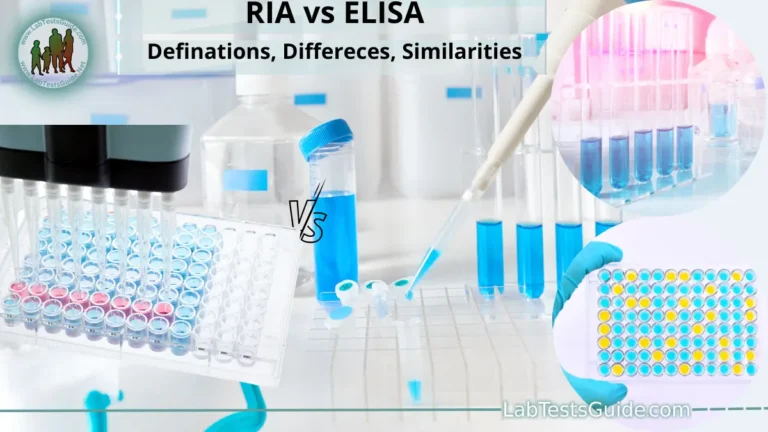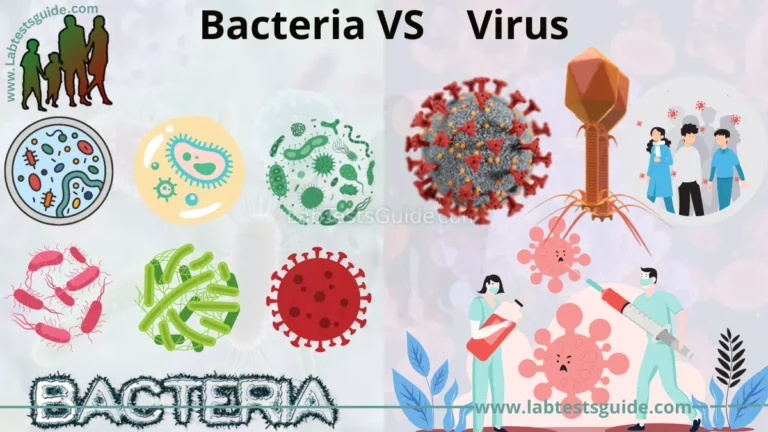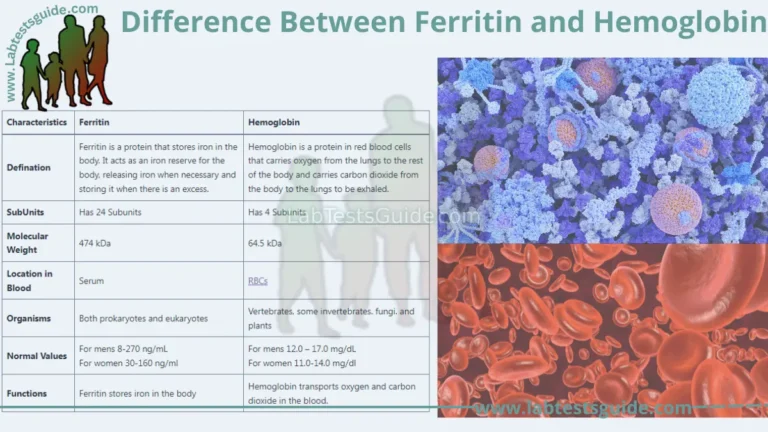Good Cholesterol vs Bad Cholesterol: Cholesterol is a type of fat that is found in your blood and is essential for various bodily functions. However, too much cholesterol, especially certain types, can be harmful to your health. Cholesterol is carried through your bloodstream by lipoproteins, and two of the most important types are high-density lipoprotein (HDL) and low-density lipoprotein (LDL).

Good cholesterol vs Bad Cholesterol: Good cholesterol, known as HDL (High-Density Lipoprotein), helps remove excess cholesterol from the bloodstream, reducing the risk of heart disease. Bad cholesterol, referred to as LDL (Low-Density Lipoprotein), can lead to plaque buildup in arteries, increasing the risk of heart disease. Balancing these cholesterol types is crucial for heart health.
- How to Manage High Cholesterol with Diet ?
- What are Some Natural Remedies for High Cholesterol ?
- Effective Ways to Manage and Control Cholesterol Levels: Tips, Preventions and Remedies
- How to Prevent Heart Disease – Lab Tests Guide Blog
Short Overview:
- HDL (High-Density Lipoprotein):
- HDL is often referred to as “good cholesterol.”
- It helps remove excess cholesterol from your bloodstream and transport it to the liver for excretion.
- High levels of HDL are associated with a reduced risk of heart disease.
- HDL acts as a scavenger, cleaning up excess cholesterol and preventing the buildup of plaque in your arteries.
- LDL (Low-Density Lipoprotein):
- LDL is often referred to as “bad cholesterol.”
- It carries cholesterol from your liver to the cells in your body, including cells that line your arteries.
- When there is an excess of LDL in the blood, it can lead to the accumulation of cholesterol in the walls of arteries, forming plaque.
- High levels of LDL are associated with an increased risk of heart disease because plaque buildup can narrow and block arteries, leading to conditions like atherosclerosis and coronary artery disease.
Purpose of the Article:
- To explain the differences between good cholesterol (HDL) and bad cholesterol (LDL) and their respective roles in health.
- To highlight the importance of cholesterol management for overall well-being.
- To provide practical information on how to improve HDL levels and lower LDL levels.
- To clarify the significance of cholesterol testing and interpreting lipid profiles.
- To help readers make informed choices for heart-healthy living.
Cholesterol Basics:
- Definition: Cholesterol is a fatty substance found in the body, essential for cell structure and function.
- Biological Role: Cholesterol plays a vital role in building cell membranes, producing hormones, and aiding in digestion.
- Sources: Cholesterol is produced by the liver and obtained from dietary sources, such as animal products.
- Types: Cholesterol exists in different forms, notably high-density lipoprotein (HDL) and low-density lipoprotein (LDL).
- Functions: It serves as a precursor for hormones like estrogen and testosterone and is essential for vitamin D synthesis.
- Balancing Act: Maintaining the right balance of cholesterol is crucial for overall health. Excess cholesterol can lead to health problems.
Good Cholesterol (HDL):
Good Cholesterol (HDL) Definition:
HDL stands for High-Density Lipoprotein. It is a type of lipoprotein, a complex molecule composed of proteins and lipids (fats), that transports cholesterol through the bloodstream. HDL is often referred to as “good cholesterol” because of its positive effects on health.
Role of HDL:
- Cholesterol Transport: HDL’s primary role is to transport excess cholesterol from the body’s tissues and arteries back to the liver. This process is known as reverse cholesterol transport.
- Cholesterol Removal: HDL acts as a scavenger, picking up cholesterol deposited in artery walls and preventing the formation of plaque, which can narrow and block arteries.
Benefits of HDL:
Having high levels of HDL cholesterol in your bloodstream offers several health benefits:
- Reduced Risk of Heart Disease: High HDL levels are associated with a lower risk of heart disease and atherosclerosis (hardening of the arteries).
- Anti-Inflammatory Properties: HDL has anti-inflammatory and antioxidant properties that can protect the inner lining of blood vessels and reduce inflammation.
- Improved Cardiovascular Health: HDL helps maintain the health of your blood vessels, promotes healthy blood flow, and reduces the risk of blood clots.
Ways to Increase HDL:
To boost your HDL cholesterol levels, consider the following lifestyle changes:
- Regular Exercise: Engage in aerobic exercises like jogging, brisk walking, swimming, or cycling, which can significantly raise HDL levels.
- Healthy Diet: Consume a diet rich in monounsaturated fats (found in olive oil, avocados, and nuts), omega-3 fatty acids (found in fatty fish like salmon), and soluble fiber (found in oats and fruits).
- Limit Saturated and Trans Fats: Reduce the intake of saturated and trans fats found in processed foods, fried items, and fatty meats.
- Moderate Alcohol Consumption: If you drink alcohol, do so in moderation, as some studies suggest that moderate alcohol intake may increase HDL levels. However, excessive alcohol consumption can have negative health effects.
- Quit Smoking: Smoking lowers HDL levels. Quitting smoking can lead to an increase in HDL cholesterol.
- Maintain a Healthy Weight: Losing excess weight, especially if you are overweight or obese, can raise HDL levels.
- Consider Medication: In some cases, healthcare providers may prescribe medications like statins to increase HDL levels, but this is typically done alongside other risk-reduction strategies.
Bad Cholesterol (LDL):
Bad Cholesterol (LDL) Definition:
LDL stands for Low-Density Lipoprotein. It is a type of lipoprotein that carries cholesterol from the liver to various cells and tissues in the body. LDL is often referred to as “bad cholesterol” because high levels of LDL can lead to the accumulation of cholesterol in the walls of arteries, which can increase the risk of cardiovascular diseases.
Role of LDL:
- Cholesterol Transport: LDL’s primary role is to transport cholesterol from the liver to cells throughout the body, where it is used for various functions, including the construction of cell membranes and the production of hormones.
Risks Associated with High LDL Levels:
Elevated levels of LDL cholesterol are associated with several health risks:
- Atherosclerosis: High LDL levels can lead to the accumulation of cholesterol in the walls of arteries, forming plaque. Over time, this can narrow and block arteries, reducing blood flow and increasing the risk of atherosclerosis (hardening of the arteries).
- Coronary Artery Disease: Atherosclerosis in the coronary arteries can lead to coronary artery disease (CAD), which can result in chest pain (angina) and increase the risk of heart attacks.
- Stroke: The buildup of plaque in the arteries can also lead to strokes when it affects the blood vessels in the brain.
- Peripheral Artery Disease: High LDL levels can lead to a narrowing of arteries in the legs and arms, reducing blood flow to these areas and causing pain or cramping during physical activity.
Strategies to Lower LDL:
To reduce high LDL cholesterol levels, consider the following strategies:
- Dietary Changes:
- Reduce Saturated and Trans Fats: Limit the intake of saturated fats found in fatty meats, full-fat dairy products, and some oils (e.g., coconut oil). Avoid trans fats often found in processed and fried foods.
- Increase Fiber Intake: Consume more soluble fiber from foods like oats, beans, lentils, fruits, and vegetables, as it can help lower LDL levels.
- Choose Healthy Fats: Incorporate sources of healthy fats, such as monounsaturated fats (found in olive oil, avocados, and nuts) and omega-3 fatty acids (found in fatty fish like salmon and walnuts).
- Regular Exercise:
- Engage in regular aerobic exercises like jogging, cycling, or swimming, which can help lower LDL levels and improve overall cardiovascular health.
- Maintain a Healthy Weight:
- Losing excess weight, if needed, can lower LDL levels.
- Medications:
- In some cases, healthcare providers may prescribe cholesterol-lowering medications, such as statins, to lower LDL levels when lifestyle changes alone are insufficient or when there is a high risk of cardiovascular disease.
HDL/LDL Ratio:
- Measure your HDL cholesterol level (in mg/dL).
- Measure your LDL cholesterol level (in mg/dL).
- Divide your HDL level by your LDL level (HDL/LDL).
Interpretation:
- If your HDL/LDL ratio is less than 0.3, it suggests a higher risk of cardiovascular disease because your LDL cholesterol is significantly higher than your HDL cholesterol.
- If your HDL/LDL ratio is between 0.3 and 0.4, it indicates a moderate risk.
- If your HDL/LDL ratio is greater than 0.4, it suggests a lower risk of cardiovascular disease because your HDL cholesterol is relatively higher compared to your LDL cholesterol.
Total Cholesterol/HDL Ratio:
- Measure your total cholesterol level (in mg/dL).
- Measure your HDL cholesterol level (in mg/dL).
- Divide your total cholesterol level by your HDL cholesterol level (Cholesterol/HDL).
Interpretation:
- A lower Total Cholesterol/HDL ratio is generally considered more favorable and indicates a lower risk of heart disease.
- A higher Total Cholesterol/HDL ratio suggests a higher risk of heart disease because your total cholesterol level is relatively higher compared to your HDL cholesterol level.
Factors Affecting Cholesterol Levels:
- Diet: The types of fats and cholesterol in your diet can influence your cholesterol levels. High intake of saturated fats and trans fats can raise LDL (bad) cholesterol levels.
- Physical Activity: Regular physical activity can help lower LDL cholesterol and raise HDL (good) cholesterol levels.
- Genetics: Family history and genetics can play a significant role in determining your cholesterol levels. Some people may have a genetic predisposition to high cholesterol.
- Age and Gender: Cholesterol levels tend to increase with age. Before menopause, women typically have lower LDL cholesterol levels than men, but this can change with age.
- Weight: Being overweight or obese can lead to higher LDL cholesterol levels and lower HDL cholesterol levels.
- Smoking: Smoking can lower HDL cholesterol levels and damage blood vessels, making it easier for cholesterol to accumulate.
- Medical Conditions: Certain medical conditions, such as diabetes and hypothyroidism, can affect cholesterol levels.
- Medications: Some medications, including certain contraceptives and steroids, can influence cholesterol levels.
- Dietary Fiber: Foods high in soluble fiber, like oats and legumes, can help lower LDL cholesterol levels.
- Alcohol Consumption: Moderate alcohol consumption may raise HDL cholesterol levels, but excessive alcohol intake can have negative effects on cholesterol and overall health.
Differences Between Good Cholesterol (HDL) and Bad Cholesterol (LDL):
1. Type:
- HDL stands for High-Density Lipoprotein.
- LDL stands for Low-Density Lipoprotein.
2. Role:
- HDL helps remove excess cholesterol from the bloodstream.
- LDL carries cholesterol to cells, including those that line artery walls.
3. Effect on Arteries:
- HDL helps prevent the buildup of plaque in arteries.
- LDL can contribute to the buildup of plaque in arteries.
4. Beneficial vs. Harmful:
- HDL is often referred to as “good cholesterol.”
- LDL is often referred to as “bad cholesterol.”
5. Cholesterol Transport:
- HDL transports cholesterol away from arteries to the liver for excretion.
- LDL transports cholesterol to cells throughout the body.
6. Health Impact:
- High levels of HDL are associated with reduced heart disease risk.
- High levels of LDL are associated with increased heart disease risk.
7. Size and Density:
- HDL particles are small and dense.
- LDL particles are larger and less dense.
8. Density Gradation:
- HDL has higher density due to its smaller size.
- LDL has lower density due to its larger size.
9. Lipoprotein Composition:
- HDL is composed of more protein and less cholesterol.
- LDL has a higher cholesterol content compared to protein.
10. Cholesterol Removal:
- HDL helps remove excess cholesterol from arterial walls.
- LDL contributes to cholesterol buildup in arterial walls.
11. Atherosclerosis Risk:
- High HDL levels are protective against atherosclerosis.
- High LDL levels increase the risk of atherosclerosis.
12. Cardiovascular Disease Risk:
- Low HDL levels are associated with a higher risk of heart disease.
- High LDL levels are a risk factor for heart disease.
13. Reverse Cholesterol Transport:
- HDL plays a crucial role in reverse cholesterol transport, moving cholesterol away from tissues.
- LDL participates in the delivery of cholesterol to tissues.
14. Measurement in Blood Tests:
- HDL cholesterol is measured as a separate component in lipid profiles.
- LDL cholesterol is measured as a separate component in lipid profiles.
15. Desired Levels:
- For HDL, higher levels are desired (typically above 60 mg/dL).
- For LDL, lower levels are desired (typically below 100 mg/dL for those at low cardiovascular risk).
Table of Differences:
| Aspect | HDL (High-Density Lipoprotein) | LDL (Low-Density Lipoprotein) |
|---|---|---|
| Type | HDL | LDL |
| Role | Removes excess cholesterol from arteries | Carries cholesterol to body cells |
| Effect on Arteries | Prevents plaque buildup | Contributes to plaque formation |
| Beneficial vs. Harmful | Often called “good cholesterol” | Often called “bad cholesterol” |
| Cholesterol Transport | Away from arteries to the liver | To body cells and artery walls |
| Health Impact | Reduces heart disease risk | Increases heart disease risk |
| Size and Density | Small and dense particles | Large and less dense particles |
| Density Gradation | Higher density | Lower density |
| Lipoprotein Composition | More protein, less cholesterol | Higher cholesterol content, less protein |
| Cholesterol Removal | Removes excess cholesterol from walls | Contributes to cholesterol buildup |
| Atherosclerosis Risk | Protective against atherosclerosis | Increases risk of atherosclerosis |
| Cardiovascular Disease Risk | Low HDL is a risk factor | High LDL is a risk factor |
| Reverse Cholesterol Transport | Key role in moving cholesterol away from tissues | Participates in cholesterol delivery to tissues |
| Measurement in Blood Tests | Measured separately | Measured separately |
| Desired Levels | Higher levels desired (typically >60 mg/dL) | Lower levels desired (typically <100 mg/dL for low risk) |
Similarities Between Good Cholesterol (HDL) and Bad Cholesterol (LDL):
- Both are Lipoproteins: HDL and LDL are both lipoproteins, meaning they consist of both proteins and lipids (fats).
- Cholesterol Transport: Both HDL and LDL are involved in transporting cholesterol through the bloodstream.
- Composed of Cholesterol: Both lipoproteins contain cholesterol as a major component.
- Produced in the Liver: Both HDL and LDL are synthesized in the liver.
- Essential for Body Functions: Cholesterol, transported by both HDL and LDL, is essential for various bodily functions, including cell membrane structure and hormone production.
- Circulate in the Blood: Both lipoproteins circulate in the bloodstream, delivering cholesterol to various cells and tissues.
- Can Be Modified: Both HDL and LDL can undergo chemical changes, such as oxidation, which can affect their impact on arterial health.
- Influence Heart Disease Risk: While HDL is considered “good” and LDL is considered “bad,” both can influence the risk of heart disease, albeit in opposite ways.
- Subject to Genetic Factors: Genetics can influence the levels of both HDL and LDL in an individual’s bloodstream.
- Metabolized in the Liver: After serving their roles, both HDL and LDL can be metabolized and processed by the liver.
- Can Be Altered by Diet: Diet plays a role in influencing the levels of both HDL and LDL cholesterol, with certain foods impacting their respective levels.
- Target of Medications: Medications, such as statins, can affect both HDL and LDL levels, though they are often used to lower LDL levels.
- Involved in Lipid Metabolism: Both lipoproteins are involved in the regulation of lipid (fat) metabolism in the body.
- Transport of Other Lipids: In addition to cholesterol, both HDL and LDL transport other lipids, including triglycerides.
- Subject to Lifestyle Influence: Lifestyle factors, such as exercise and smoking, can influence the levels of both HDL and LDL in the body.
Table of Similarities:
| Aspect | HDL (High-Density Lipoprotein) | LDL (Low-Density Lipoprotein) |
|---|---|---|
| Lipoprotein Type | Both are lipoproteins | Both are lipoproteins |
| Cholesterol Transport | Both transport cholesterol | Both transport cholesterol |
| Composed of Cholesterol | Both contain cholesterol as a major component | Both contain cholesterol |
| Produced in the Liver | Both synthesized in the liver | Both synthesized in the liver |
| Essential for Body Functions | Cholesterol is essential for various bodily functions | Cholesterol is essential for various bodily functions |
| Circulate in the Blood | Both circulate in the bloodstream | Both circulate in the bloodstream |
| Can Be Modified | Both can undergo chemical changes | Both can undergo chemical changes |
| Influence Heart Disease Risk | Both can affect the risk of heart disease | Both can affect the risk of heart disease |
| Subject to Genetic Factors | Genetic factors can influence levels | Genetic factors can influence levels |
| Metabolized in the Liver | Both can be metabolized by the liver | Both can be metabolized by the liver |
| Can Be Altered by Diet | Diet can impact levels of both HDL and LDL | Diet can impact levels of both HDL and LDL |
| Target of Medications | Medications can affect levels of both | Medications can affect levels of both |
| Involved in Lipid Metabolism | Both play a role in lipid metabolism | Both play a role in lipid metabolism |
| Transport of Other Lipids | Both transport other lipids, including triglycerides | Both transport other lipids, including triglycerides |
| Subject to Lifestyle Influence | Lifestyle factors can influence levels | Lifestyle factors can influence levels |
How to Manage Cholesterol:
Managing cholesterol levels is crucial for maintaining cardiovascular health and reducing the risk of heart disease. Here’s a list of strategies and lifestyle changes that can help you manage your cholesterol:
- Understand Your Cholesterol Levels: First, get a cholesterol blood test to know your current cholesterol levels, including LDL, HDL, and total cholesterol. This provides a baseline for your cholesterol management plan.
- Set Target Levels: Work with your healthcare provider to determine your target cholesterol levels based on your individual risk factors and health status.
- Healthy Diet:
- Limit Saturated Fats: Reduce the consumption of foods high in saturated fats, such as fatty meats, full-fat dairy products, and certain oils like coconut oil.
- Choose Healthy Fats: Incorporate sources of healthy fats, including monounsaturated fats (olive oil, avocados, nuts) and omega-3 fatty acids (fatty fish like salmon, walnuts).
- Increase Soluble Fiber: Consume foods high in soluble fiber, like oats, beans, lentils, fruits, and vegetables, as it can help lower LDL cholesterol levels.
- Reduce Trans Fats: Avoid foods containing trans fats, which are often found in processed and fried foods.
- Portion Control: Be mindful of portion sizes to avoid overeating, which can contribute to weight gain and high cholesterol levels.
- Exercise Regularly: Engage in regular aerobic exercise, such as brisk walking, jogging, cycling, or swimming. Aim for at least 150 minutes of moderate-intensity exercise per week.
- Maintain a Healthy Weight: Losing excess weight, if needed, can help lower LDL cholesterol levels and improve overall cardiovascular health.
- Quit Smoking: Smoking lowers HDL cholesterol levels and damages blood vessels, making it easier for cholesterol to accumulate. Quitting smoking is essential for heart health.
- Moderate Alcohol Consumption: If you drink alcohol, do so in moderation. For some people, moderate alcohol intake may increase HDL levels, but excessive alcohol consumption can have negative effects on cholesterol and overall health.
- Medications: In some cases, your healthcare provider may prescribe cholesterol-lowering medications, such as statins or other lipid-lowering drugs, if lifestyle changes alone are insufficient to reach target cholesterol levels.
- Regular Checkups: Schedule regular follow-up appointments with your healthcare provider to monitor your cholesterol levels and overall cardiovascular health.
- Manage Stress: Chronic stress can affect cholesterol levels indirectly by leading to unhealthy habits like overeating. Practicing stress-reduction techniques like meditation, yoga, or deep breathing exercises can be beneficial.
- Stay Hydrated: Drinking plenty of water can help support overall health and may indirectly benefit cholesterol levels.
- Follow a Heart-Healthy Diet: Consider adopting a heart-healthy diet plan like the Mediterranean diet or the DASH (Dietary Approaches to Stop Hypertension) diet, which emphasize whole grains, fruits, vegetables, lean proteins, and healthy fats.
- Know Your Family History: Be aware of your family’s history of heart disease and high cholesterol, as genetics can play a significant role in cholesterol levels.
- Educate Yourself: Stay informed about cholesterol and heart health through reputable sources and by seeking guidance from healthcare professionals.
FAQs:
What is cholesterol, and why is it important?
Cholesterol is a type of fat found in your blood that is essential for various bodily functions. It is important because high levels of certain cholesterol types, like LDL, can increase the risk of heart disease.
What is the difference between HDL and LDL cholesterol?
HDL (High-Density Lipoprotein) is considered “good cholesterol” because it helps remove excess cholesterol from the bloodstream. LDL (Low-Density Lipoprotein) is “bad cholesterol” because it can lead to plaque buildup in arteries.
What are the risk factors for high cholesterol?
Risk factors include a diet high in saturated and trans fats, lack of physical activity, smoking, genetics, obesity, and certain medical conditions like diabetes and hypothyroidism.
How can I lower my cholesterol without medication?
Lifestyle changes like adopting a heart-healthy diet, increasing physical activity, quitting smoking, losing weight, and reducing stress can help lower cholesterol levels.
When is medication necessary to manage cholesterol?
Medication may be recommended when lifestyle changes alone are insufficient to reach target cholesterol levels, or when there are significant cardiovascular risks.
What is a normal cholesterol level?
Ideal cholesterol levels may vary based on individual health and risk factors, but generally, a total cholesterol level below 200 mg/dL, LDL below 100 mg/dL, and HDL above 60 mg/dL are considered desirable.
Can I eat eggs if I have high cholesterol?
Eggs can be included in a balanced diet for most people, but if you have high cholesterol or other heart disease risk factors, it’s advisable to limit egg yolk consumption and focus on egg whites or egg substitutes.
What is the Mediterranean diet, and how can it help with cholesterol management?
The Mediterranean diet emphasizes whole grains, fruits, vegetables, lean proteins, and healthy fats like olive oil. It is associated with lower cholesterol levels and reduced heart disease risk.
What are the potential side effects of cholesterol-lowering medications?
Common side effects of statin medications, commonly prescribed to lower cholesterol, may include muscle pain, liver enzyme abnormalities, and digestive issues. It’s important to discuss potential side effects with your healthcare provider.
Conclusion:
In conclusion, understanding and managing cholesterol levels are vital for maintaining cardiovascular health. Lifestyle choices, including a heart-healthy diet, regular exercise, weight management, and avoiding smoking, play a significant role in cholesterol management. Regular check-ups with healthcare providers and, in some cases, medication can help individuals achieve and maintain healthy cholesterol levels, reducing the risk of heart disease.
Possible References Used







